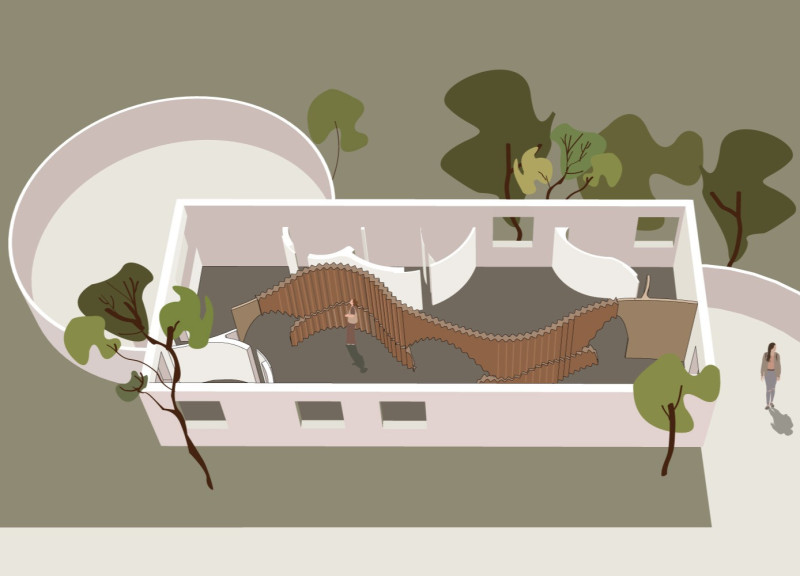5 key facts about this project
"Controllable Boxes for the Blind" is designed as a living space for visually impaired individuals in China. The project focuses on creating a welcoming community where residents can freely interact. With an emphasis on accessibility, the design includes features that support mobility and promote social connections, addressing the everyday needs of its inhabitants.
Design Concept
The primary objective is to foster community among blind individuals. By integrating living spaces that encourage interaction, the design helps combat feelings of isolation. The layout is carefully considered, promoting a sense of safety while allowing residents to engage with one another in a comfortable environment.
Spatial Organization
The layout consists of various areas, including bedrooms, dining rooms, living rooms, kitchens, bathrooms, studies, storerooms, and both private and public courtyards. These distinct spaces provide opportunities for personal privacy and communal experiences. Strategic placement of common areas allows for meaningful social engagement and interaction among residents, reinforcing the project's goal of community.
Tactile Experience
Curved walls are a significant feature of the design, minimizing the risks posed by right angles. This design choice not only contributes to safety but also aids in navigation. Residents can easily orient themselves, making the environment more user-friendly. By eliminating unnecessary walls, the workspace becomes simpler to navigate, supporting independent movement.
Material Consideration
The inclusion of a central wooden wall adds warmth to the overall design. This material choice enhances the emotional comfort of residents while remaining functional. It helps create spaces that are inviting, balancing the needs of safety with a more pleasant living experience.
The project’s thoughtful design details, combined with a focus on both accessibility and community, create a nurturing environment that supports the daily lives of visually impaired individuals.



















































